It was the comment from the Harvard Business School student that caught us off guard.
“Since Braintrust pays in crypto …” he started.
We were sitting in on a virtual class taught by professor Chris Stanton, who has studied work, careers, and marketplaces for over a decade, and who had recently invited us to discuss a recent paper he co-wrote on the Braintrust model.
“Discuss” might be too generous of a term. In reality, we were about to get grilled by a classroom full of super-smart Harvard MBA students.
At the end of the class, we had covered everything from Upwork to decentralization to scalability. We also got a chance to address some of the misconceptions they had about Braintrust–which made us think, if Harvard MBA students had these misconceptions, how many others did, too?
Here are the 10 biggest misconceptions about Braintrust, and the real truth behind them.
1. Braintrust pays in crypto, right?
Yes, Braintrust has a token, BTRST. No, that’s not how freelancers get paid. Clients on Braintrust pay freelancers in USD or local currency.
So what’s the point of the token?
The Braintrust token is the core incentive mechanism given to users for building, curating, and improving the network. Examples of this include building out a talent profile (work history, reputation, skill certifications, etc.), referring new talent, referring new clients and helping to vet and curate the talent pool. Community members can also earn tokens by taking courses on Braintrust Academy, which teaches talent valuable skills to help them earn more on the network.
2. So, you’re like other gig platforms?
Uh, no.
Upwork is a great example of a traditional gig work platform. And while both of these platforms give you access to talent, we couldn’t be any more different.
For example, Braintrust pre-screens and vets every Talent on the network to ensure they’re the best of the best. We only accept top tier talent, which is why more enterprises trust Braintrust Talent than any other platform.
Braintrust doesn’t just vet Talent. They also vet Enterprises to make sure that they all pay top rates and have clear project definitions before they post a job.
That’s why the average job on Braintrust is $57,000 and the average job on Upwork is $750.
But really, we’re just getting started:
- Other marketplaces markup talent by 30-40%. Braintrust charges zero fees to Talent, and just a 10% service fee to clients.
- Other platforms take 1-3 months to match you to Talent. Braintrust takes 48-hours.
- Other platforms won’t guarantee success. Braintrust has a money-back guarantee.
- Other platforms take money from Talent. Braintrust let’s them keep 100% of what they earn.
- Other platforms are owned by investors and shareholders. Braintrust is owned by Talent.
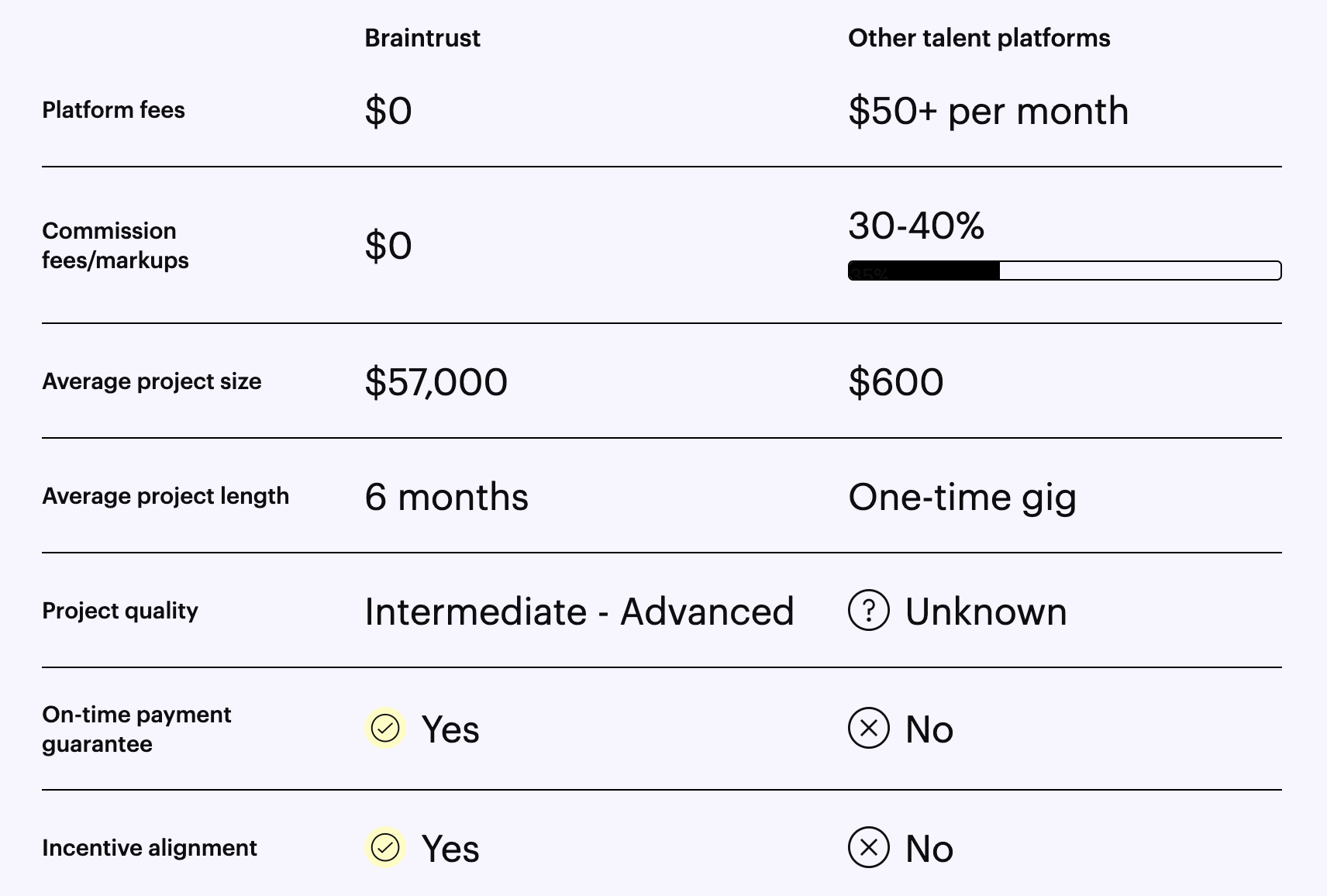 To learn more about how Braintrust stacks up to other platforms, check out this page on our website.
To learn more about how Braintrust stacks up to other platforms, check out this page on our website.
3. Decentralized platforms can’t get things done.
Decentralized means that Braintrust is controlled by the community.
Instead of a few people in an ivory tower calling all the shots, the decisions at Braintrust are made by the community at large. And that happens through Governance processes, which ensure that every change on the platform is done for the community and by the community.
Instead of slowing down innovation, this actually helps speed it up.
When a BTRST holder proposes a new idea, other BTRST holders can show their support in real-time by voting on the proposal. Once that vote passes, it immediately becomes a part of the smart contract that powers the Braintrust Network.
 In other words, positive changes happen instantaneously.
In other words, positive changes happen instantaneously.
Other platforms are designed to reward the people at the top. By turning that model upside down, Braintrust doesn’t just redistribute power–it allows Braintrust to keep fees low and put more money in the Talent’s pockets.
4. A talent marketplace can’t make both companies and freelancers happy.
Actually, it can. And it does. Here’s how.
Enterprises want the best Talent at the best prices. Meanwhile, Talent want great jobs that pay well. So far, everyone can still be happy.
But then all of a sudden, a middleman walks in. Let’s say it’s your average consulting firm that marks up Talent by as much as 9X. Their entire business model is built around charging Enterprises as much money as they can while paying Talent as little as possible.
Do you see the misalignment, now?
It doesn’t take a rocket scientist to figure out how to fix this.
Braintrust did it by eliminating the middleman (sorry, consultants) and creating a user-owned network that connects the world’s top Enterprises with the world’s top Talent.
And because Braintrust eliminated the ridiculous markups and fees, Enterprises can now make their budget go 3-4X further.
And the Talent? They get to keep 100% of what they earn.
Everyone’s happy.
5. You can’t scale a Talent-owned network.
Yes, you can. But we’re doing it a little differently.
You see, in most marketplaces, scaling comes with challenges. For example, if you put millions of freelancers on a single platform, you’ll end up forcing the Talent to compete against each other...making it harder for employers to find the best choice.
We’ve seen venture capital driven scale in centralized marketplaces like Uber, Airbnb, Fiverr, eBay, and more. So Braintrust is tackling scale via a different approach: decentralization.
That’s where blockchain comes into the mix. Braintrust’s decentralized, blockchain-based model enables scale without friction. How? By eliminating fees and aligning incentives.
Talent don’t have to compete with other Talent to land jobs. Clients don’t have to compete with other clients to land Talent. Instead, each side benefits from the success and growth of the other side, and that’s great motivation to help scale.
But don’t just take our word for it. Braintrust has experienced 35% month-over-month growth in the past year, with hundreds of Enterprises and 50,000+ in the community.
Just take a look at the rate of jobs that have been added to the platform - that’s a 450% increase over just 12 months.
As long as Braintrust meets the needs of both Talent and Enterprises, scaling will take care of itself, just like it has been.
6. The BTRST token has no purpose.
Oh no, this one is so off base.
Just a reminder, BTRST tokens are not a payment layer, a legal claim on any business, a dividend or profit return mechanism.
Braintrust uses blockchain technology to transparently distribute control of its network to the community members who contribute to building it. By distributing control globally based on user contributions (like referring talent, vetting talent, and referring clients), Braintrust’s blockchain-powered model aligns the incentives of the network itself with the people building it, rather than relying on a centralized platform that would otherwise extract disproportionate value in the form of high fees from its knowledge workers.
Not only does this put more control in the hands of the community, it helps grow the network rapidly, and ensures the interests of Talent are always top priority.
7. Braintrust can’t be a non-profit, can it?
Believe it or not, The Braintrust Technology Foundation is a not-for-profit entity that is soley focused on maintaining the Braintrust Network.
It provides organizational frameworks for governance and business operations, as well as handling legal infrastructure for the Braintrust Network.
8. Braintrust doesn't make money.
Braintrust charges a 10% service fee to clients on top of Talent’s earnings. That 10% essentially goes to the community to run the service, add features, and build the Network.
But what Braintrust doesn’t do–because it’s user-owned and controlled–is continually look for ways to increase that percentage, maximize the money the platform takes for itself, and take an ever-bigger chunk out of what Talent makes.
9. You can’t possibly vet thousands of Talent to ensure quality and competence stay high.
On a traditional platform, that’s true. And that’s why Enterprises have such a huge challenge finding quality Talent on other gig economy sites out there.
But the Braintrust model is intentionally built to account for this. When a Talent applies to join the Network, they’re going to be vetted by other Braintrust community members. And those Talent Screeners.
This approach ensures the quality and competency of the Network, while giving Enterprises the confidence they need to know that they’re getting the best of the best.
This is what it looks like when the community is acting in a way that benefits the community.
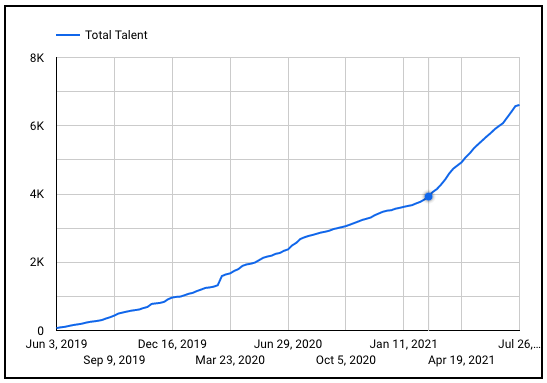
How the talent network has grown.
10. These are the only misconceptions about Braintrust.
Alright, we got you. But we know that when it comes to new business ideas, especially ones that don’t fit into any existing box, there’s always going to be more questions.
So tell us, what did we miss?
Connect with the Braintrust community on LinkedIn or Twitter. Or find us - Adam Jackson: LinkedIn, Twitter - Gabe Luna Ostaseski: LinkedIn, Twitter.
We’ll answer any questions you have about the Braintrust model and how it works! And if you like what you’ve read so far, go ahead and take the next step and join our Talent Network or the hundreds of Enterprises that are innovating on the Braintrust platform.

.jpg)

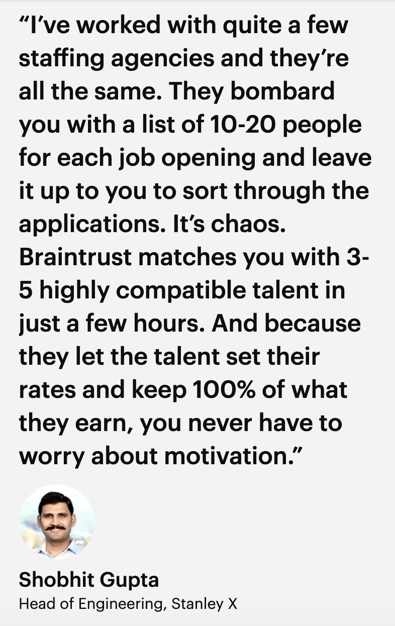
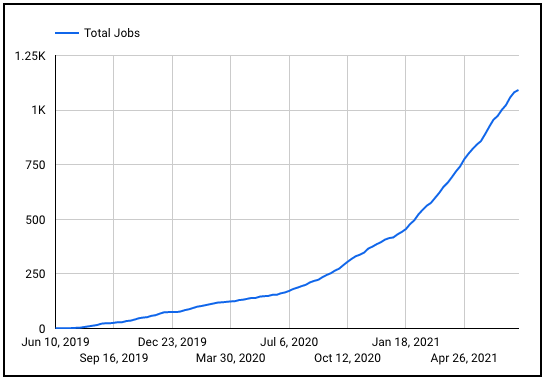
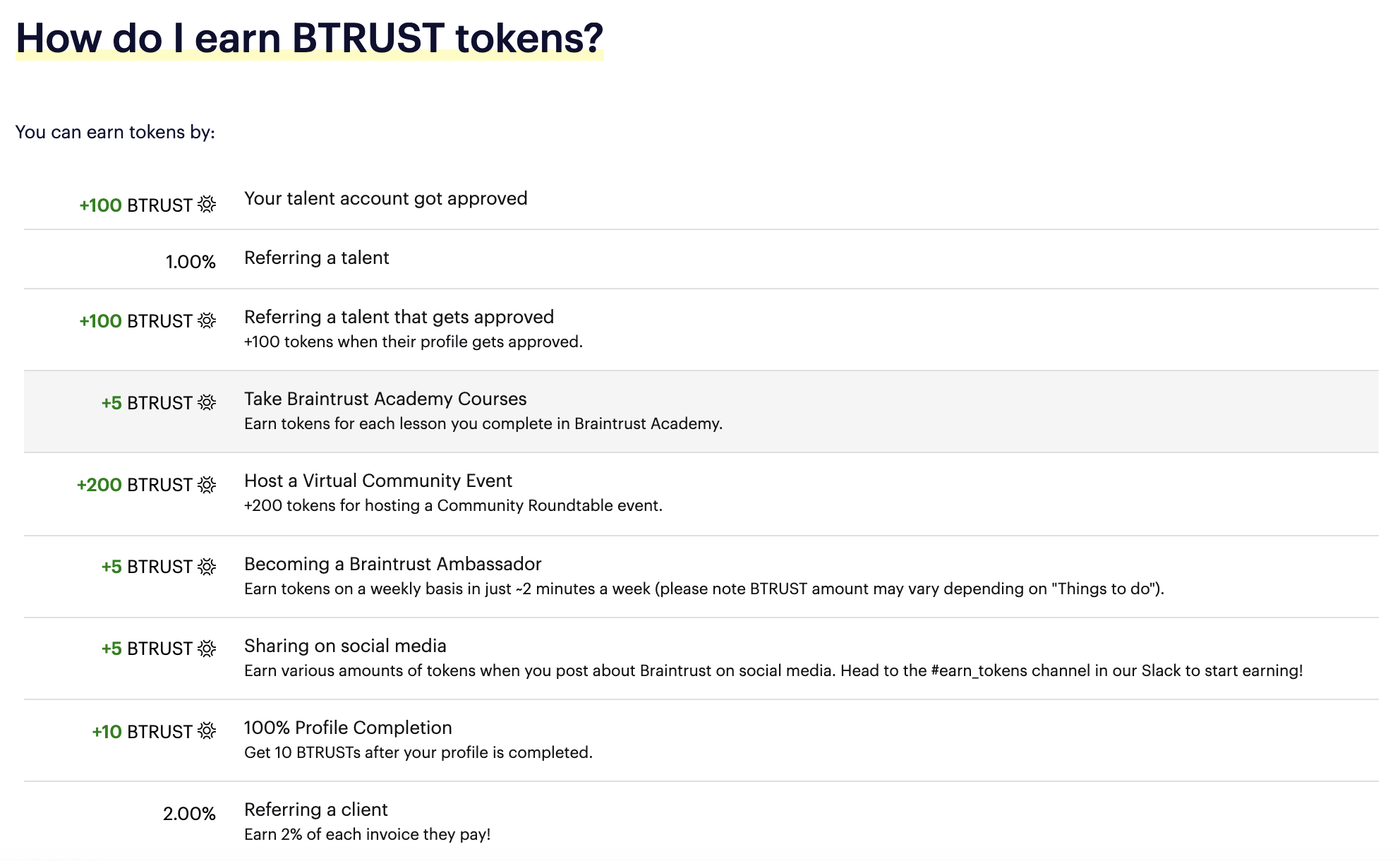
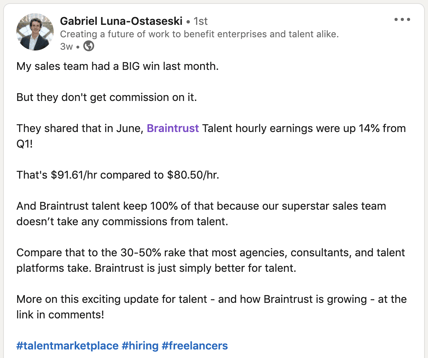
.png)